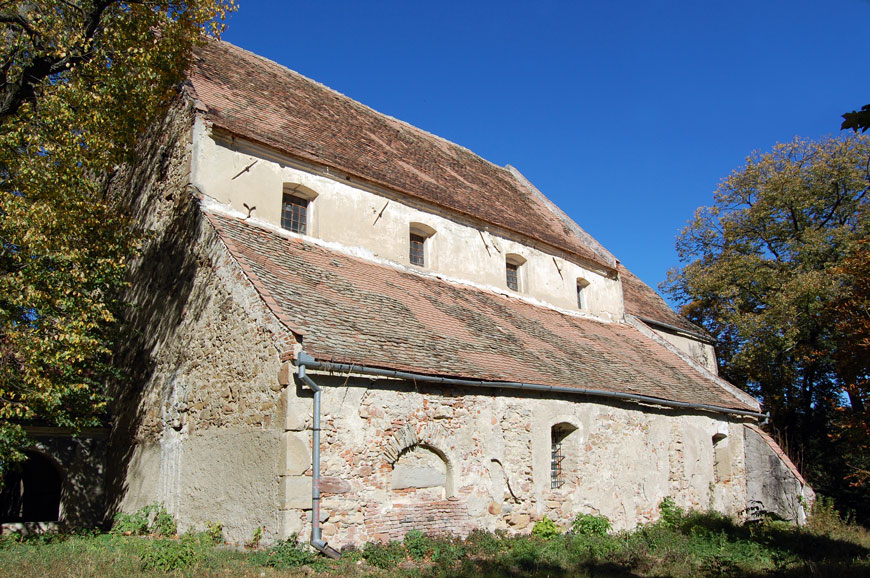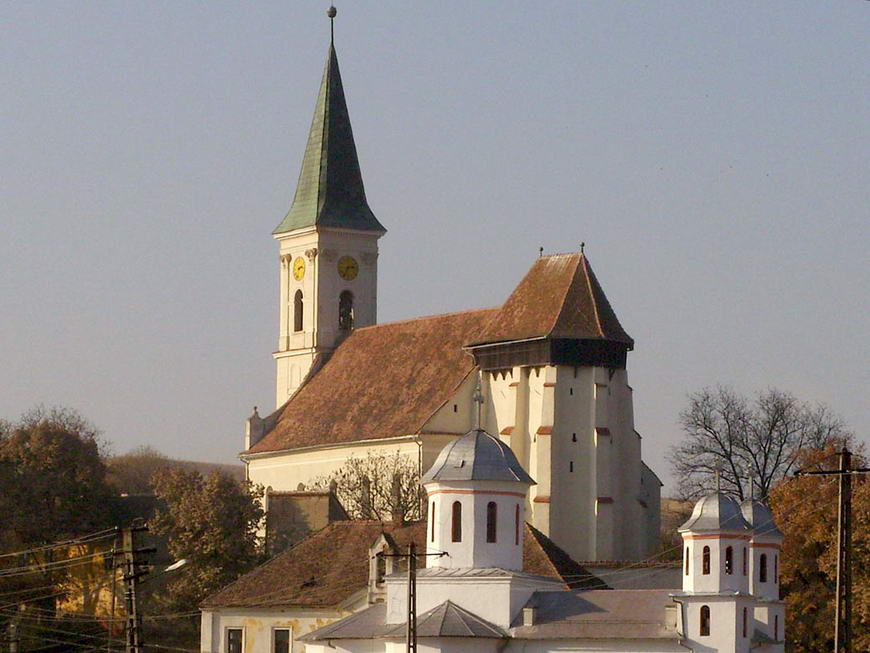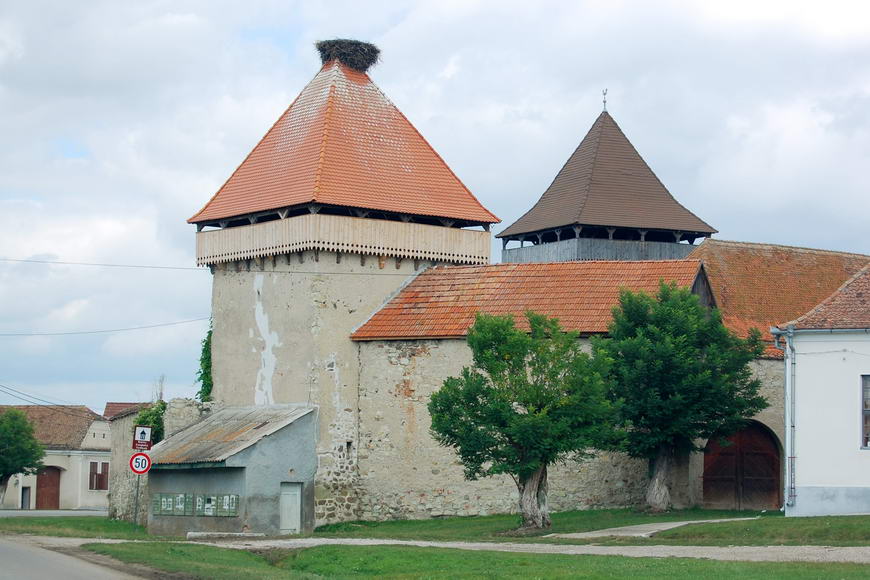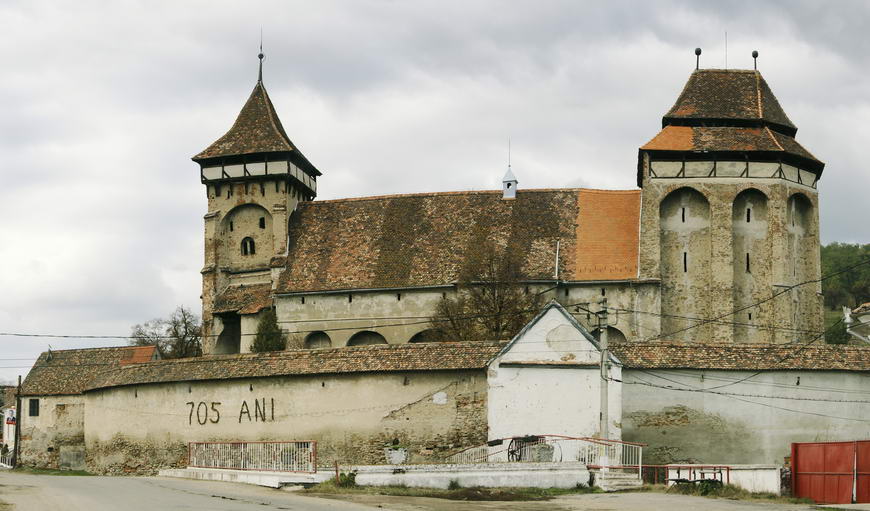
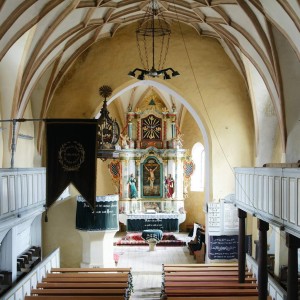 In place of the 14th century initial construction, a new church was built in the 15th century. Around 1500, during the fortification phase, the ensemble received its present appearance. The chancel was rebuilt as a tower featuring three brick defence levels and 1,5 m thick walls. The forth level projects over the lower part and is supported by the arches between the buttresses. It has a battlement platform built in the timber frame technique. A defence level was constructed above the main nave and the northern and southern entrances were provided with defence systems. The bell tower is impressive through its numerous and manifold defence systems. The church was surrounded by a curtain wall with battlement walk on brick arches, two bastions and a tower, as well as a gate tower provided with a portcullis.
In place of the 14th century initial construction, a new church was built in the 15th century. Around 1500, during the fortification phase, the ensemble received its present appearance. The chancel was rebuilt as a tower featuring three brick defence levels and 1,5 m thick walls. The forth level projects over the lower part and is supported by the arches between the buttresses. It has a battlement platform built in the timber frame technique. A defence level was constructed above the main nave and the northern and southern entrances were provided with defence systems. The bell tower is impressive through its numerous and manifold defence systems. The church was surrounded by a curtain wall with battlement walk on brick arches, two bastions and a tower, as well as a gate tower provided with a portcullis.
Inside the church a pew from 1528 was built during the transition phase between Gothic and Renaissance. The paintings of the altar were executed 1779 by Stephan Folbarth from Sighişoara.
Place and surroundings

The village’s Saxon name derives from the Middle German dialect, being composed of the words “Urm” (snake) and “Loh” (forest), thus meaning “The Snakes Forest”. The reason for such a bizarre name remains a mystery, but it is certain that the locality can take pride in one of the mightiest and most impressive fortified churches in Transylvania. Due to the great architectonic value and its almost entirely preserved defence system, the building was listed in 1999 as UNESCO World Heritage.
The image of this petrified treasure is so astonishing, that the visitor can’t help wondering about the skills of the people who built it. The art historian G. Oprescu admires the love of liberty and the artistry of the creators of the Transylvanian fortified churches: “ Because these monuments weren’t constructed by kings, noblemen or experts, but by “simple” peasants, whose titanic efforts assured not only their own survival during those dark ages, but even more, it guaranteed the timeless life of their culture”.



